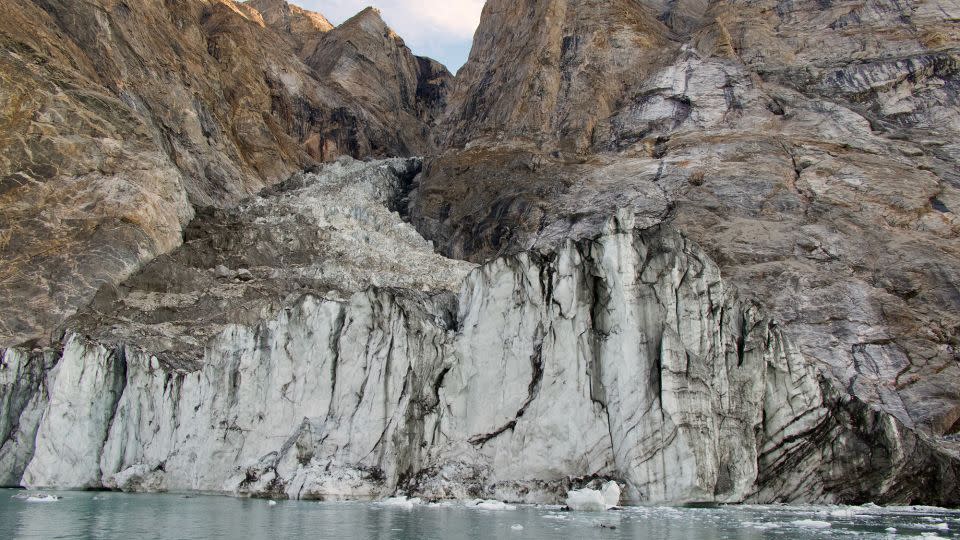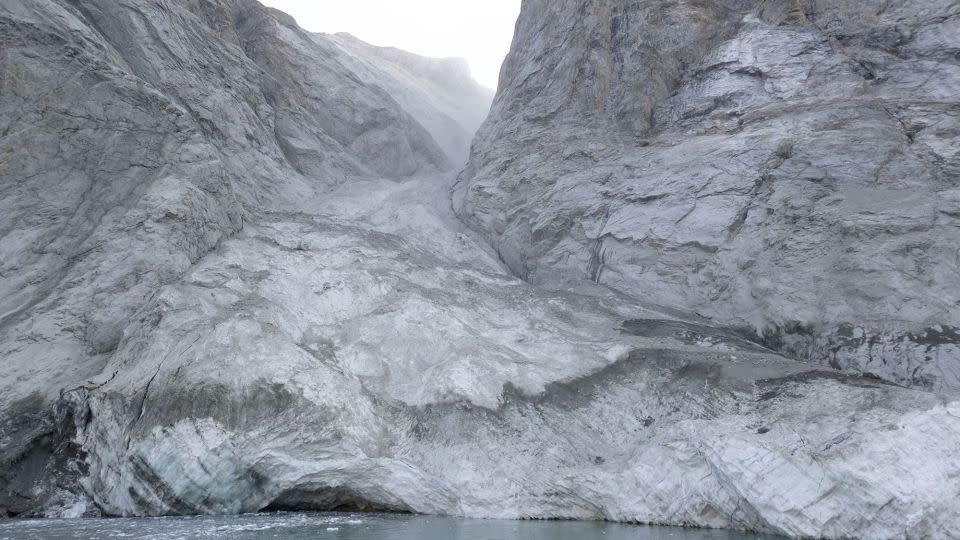It started with a melting glacier that triggered an enormous landslide, which activated a 650-foot excessive mega-tsunami in Greenland finalSeptember Then got here one thing unusual: a wierd resonance that trembled the earth for 9 days.
Over the earlier 12 months, a number of researchers all through the globe have truly been trying to establish what this sign was.
Now they’ve a response, in line with a brand-new analysis research within the journal Science, and it provides but an extra cautioning that the Arctic goes into “uncharted waters” as human beings press worldwide temperature ranges ever earlier than upwards.
Some seismologists believed their instruments have been broken once they started grabbing resonances with the bottom again in September, said Stephen Hicks, a analysis co-author and a seismologist at University College London.
It had not been the considerable band of excessive pitches and rolls you may anticipate with a quake, but much more of a boring hum, he knowledgeable CNN. Earthquake alerts typically are inclined to final for minutes; this set lasted for 9 days.
He was pissed off, it was “completely unprecedented,” he said.
Seismologists mapped the sign to jap Greenland, but couldn’t decide a selected place. So they referred to as coworkers in Denmark, that had truly gotten data of a landslide-triggered tidal wave in a distant part of the realm referred to as Dickson Fjord.
The outcome was an virtually year-long cooperation in between 68 researchers all through 15 nations, that brushed with seismic, satellite tv for pc and on-the-ground data, together with simulations of tidal wave waves to resolve the issue.




What occurred known as a “cascading hazard,” Svennevig said, and the whole lot started with human-caused surroundings modification.
For years, the glacier on the base of an enormous hill looming just about 4,000 toes over Dickson Fjord had truly been melting, as a number of glaciers stay within the swiftly warming up Arctic.
As the glacier thinned, the hill got here to be progressively unsteady previous to it sooner or later broke down on September 16 in 2015, sending out ample rock and particles detecting the water to replenish 10,000 Olympic- sized pool.
The succeeding mega-tsunami– among the many best in present background– triggered a wave which got here to be entraped within the flexible, slim arm for larger than per week, sloshing backward and forward each 90 secs.
The sensation, referred to as a “seiche,” describes the balanced movement of a wave in an encased space, corresponding to water spilling up and down in a bath or mug. One of the researchers additionally tried (and fell quick) to recreate the impact of their very personal tub tub.
While seiches are broadly identified, researchers previously had no idea they may final as lengthy.
“Had I suggested a year ago that a seiche could persist for nine days, people would shake their heads and say that’s impossible,” said Svennevig, that in contrast the exploration to hastily finding a brand-new shade in a rainbow.
It was this seiche that developed the seismic energy within the Earth’s crust, the researchers positioned.
It is probably the very first time researchers have truly straight noticed the impact of surroundings modification “on the ground beneath our feet,” saidHicks And no space was immune; the sign took a visit from Greenland to Antarctica in relating to an hour, he included.
No one was wounded within the tidal wave, though it removed centuries-old social heritage web sites and harmed a vacant armed forces base. But this stretch of water will get on a ceaselessly utilized cruise liner course. If one had truly existed on the time, “the consequences would have been devastating,” the analysis research’s writers composed.
Eastern Greenland had truly by no means ever skilled a landslide and tidal wave much like this previous to, Svennevig said. It reveals brand-new areas of the Arctic are “coming online” for these form of surroundings events, he included.
As the Arctic stays to warmth– over the previous few years, the realm has truly warmed up 4 occasions quicker than the rest of the globe– landslide-triggered mega-tsunamis may come to be much more typical and with deadly repercussions.
In June 2017, a tidal wave in northwest Greenland eradicated 4 people and eliminated properties. The hazard surpasses Greenland, Svennevig said; similar-shaped arms exist in numerous different areas, consisting of Alaska, parts of Canada and Norway.
What occurred in Greenland final September “once again demonstrates the ongoing destabilization of large mountain slopes in the Arctic due to amplified climate warming,” said Paula Snook, a landslide rock hound on the Western Norway University of Applied Sciences that was not related to the analysis research.
Recent rock avalanches within the Arctic together with in Alpine areas, are “an alarming signal,” she knowledgeable CNN. “We are thawing ground which has been in a cold, frozen state for many thousands of years.”
There’s nonetheless a substantial amount of research to be completed on rock avalanches, that are likewise impacted by all-natural procedures, warned Lena Rubensdotter, a scientist on the Geological Survey of Norway, that was likewise not related to the analysis research.
However, she included, it’s “logical to assume that we will see more frequent rock collapses in permafrost slopes as the climate warms in Arctic regions.”
The exploration of all-natural sensations performing in apparently irregular strategies highlights precisely how this part of the globe is reworking in unexpected strategies, Svennevig said.
“It’s a sign that climate change is pushing these systems into uncharted waters.”
For much more CNN data and e-newsletters develop an account at CNN.com

